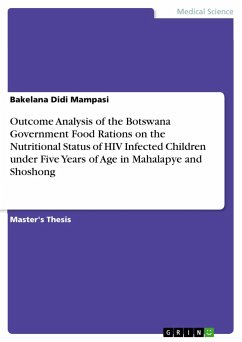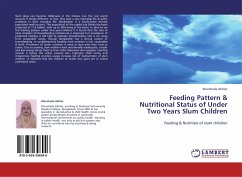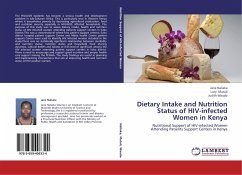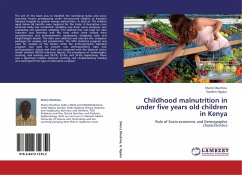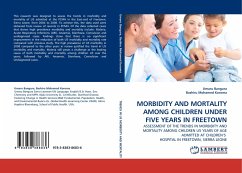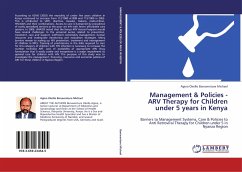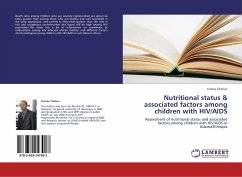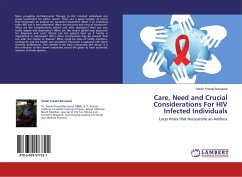Master's Thesis from the year 2017 in the subject Medicine - Pediatrics, Stellenbosch Universitiy, course: HIV AND AIDS MANAGEMENT, language: English, abstract: Malnutrition might be the result of complex and interconnected factors, but the role poverty and HIV and AIDS epidemic played in underprivileged settings were determinant in the prevalence of a situation that accounted alone for more than one-third of infant mortality in the developing world. As a vulnerable group, the necessity of a balanced nutrition for children below five years of age to ensure growth and strengthen a developing immune system is paramount.The research study assessed the outcome of the Botswana government food rations intervention through the analysis of the anthropometric parameters of 54 candidates in two constituencies of the central district (MAHALAPYE and SHOSHONG). Through a descriptive quantitative research design, the research study retrospectively reviewed anthropometric parameters of 54 HIV infected children below five years of age for their first year of attendance in respective child welfare clinics of the two constituencies. A customised data collection tool was designed for the purpose and aimed at recording the weights for each visit, the nutritional classifications per visit, the mid-upper-arm classifications, the default to child welfare clinics and the food packages study participants received per visit. Each study site visited availed the Nutritional Surveillance logbooks and the birth registers from 2010 to date. Only data from their first year under the food programme constituted the interest of the study. However, it resulted from the analysis a lower malnutrition rate of study participants (13%) in comparison to the latest national prevalence. A significant annual default rate of 33% was noted with regard to children attendance to child welfare clinics. The food programme did not perform according to expectations in reference to a reduced coverage rate offood rations. The study further highlighted the concerning level of food shortage in health facilities. Study participants had a normal growth pattern when confronted to the WHO criteria despite a significant default rate and the shortage in food supply. Although the government nutritional supplemental programme has undoubtedly contributed to the nutritional status of HIV infected children below five years of age, it was hard to establish the cause-to-effect relationship between the variables, an endeavour outside the scope of this study.

